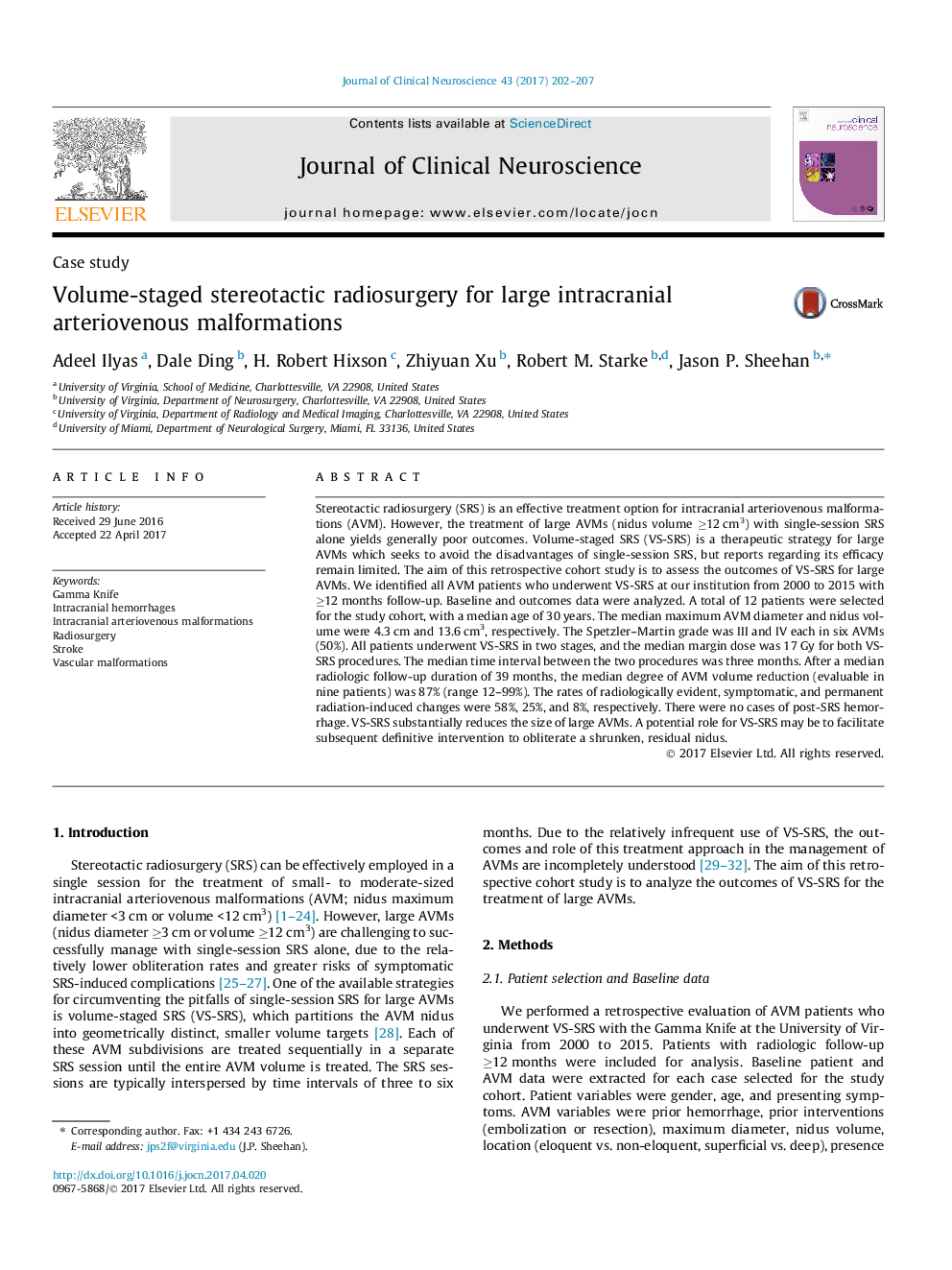| Article ID | Journal | Published Year | Pages | File Type |
|---|---|---|---|---|
| 5629663 | Journal of Clinical Neuroscience | 2017 | 6 Pages |
â¢We performed a retrospective cohort study of VS-SRS for large AVMs.â¢The median nidus volume was 13.6 cm3, and all AVMs were treated in two stages.â¢The median AVM volume reduction was 87%, with no cases of post-SRS hemorrhage.â¢Radiation-induced changes were symptomatic in 25% and permanent in 8%.â¢VS-SRS can shrink large AVMs, allowing definitive treatment of the residual nidus.
Stereotactic radiosurgery (SRS) is an effective treatment option for intracranial arteriovenous malformations (AVM). However, the treatment of large AVMs (nidus volume â¥12 cm3) with single-session SRS alone yields generally poor outcomes. Volume-staged SRS (VS-SRS) is a therapeutic strategy for large AVMs which seeks to avoid the disadvantages of single-session SRS, but reports regarding its efficacy remain limited. The aim of this retrospective cohort study is to assess the outcomes of VS-SRS for large AVMs. We identified all AVM patients who underwent VS-SRS at our institution from 2000 to 2015 with â¥12 months follow-up. Baseline and outcomes data were analyzed. A total of 12 patients were selected for the study cohort, with a median age of 30 years. The median maximum AVM diameter and nidus volume were 4.3 cm and 13.6 cm3, respectively. The Spetzler-Martin grade was III and IV each in six AVMs (50%). All patients underwent VS-SRS in two stages, and the median margin dose was 17 Gy for both VS-SRS procedures. The median time interval between the two procedures was three months. After a median radiologic follow-up duration of 39 months, the median degree of AVM volume reduction (evaluable in nine patients) was 87% (range 12-99%). The rates of radiologically evident, symptomatic, and permanent radiation-induced changes were 58%, 25%, and 8%, respectively. There were no cases of post-SRS hemorrhage. VS-SRS substantially reduces the size of large AVMs. A potential role for VS-SRS may be to facilitate subsequent definitive intervention to obliterate a shrunken, residual nidus.
